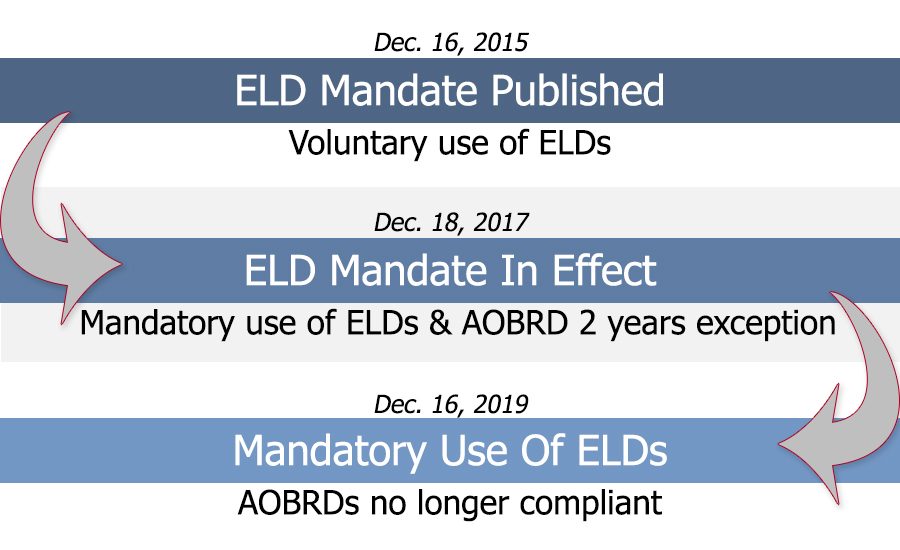ELDs and Hours Of Service

On December 18, 2017 the Electronic Log Mandate went into effect. At that point all commercial drivers who record hours of service were required to begin use of an ELD (Electronic Logging Device) which has been certified by FMCSA (Federal Motor Carrier Safety Administration).
The ELD will record hours of service for the driver. These records are the driver’s proof of compliance with FMCSR (Federal Motor Carrier Safety Regulations), IFTA (International Fuel Tax Agreement) and other regulations. These records, which must be kept with a back-up copy for 6 months, will protect drivers in case of threatened fines or litigation. Short-Haul drivers must document daily start time, end time, and total on-duty time.
Full enforcement of the ELD law is now in effect and non-compliant drivers are being put out of service. Drivers using grandfathered AOBRD (Automatic On-Board Recording Device) are currently exempt but must switch to ELD by Dec. 16, 2019. Other exemptions include, drive-away tow-away companies, pre-2000 vehicles (determined by the date on the vehicle registration), rental trucks (less than 9 days), agricultural commodities/livestock, and drivers required to log eight or less times in 30 consecutive days.
Whether using ELD or AOBRD, drivers may be asked to display the log for the current day as well as the prior 7 days. When auditing logs, the officers look for unassigned time or “hiding” miles. All edits made by the driver are visible to the officer and will need to be explained.
As with any regulation, the drivers required to use the ELD must be adequately trained, limits should be observed, policies should be in place to ensure compliance, and corrective action should be taken when a problem is found.







